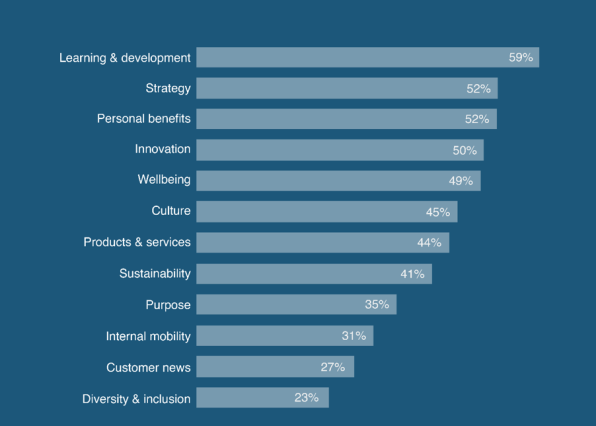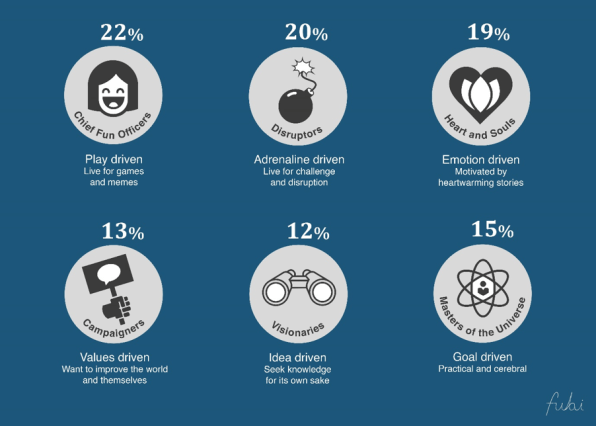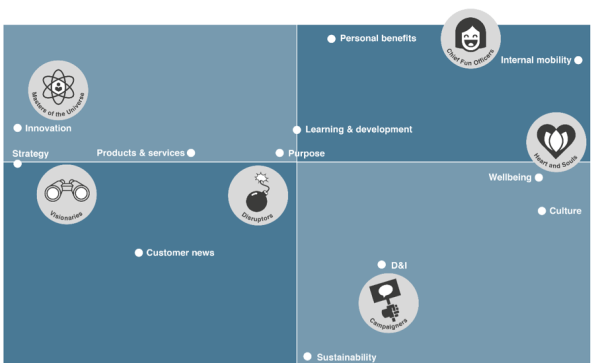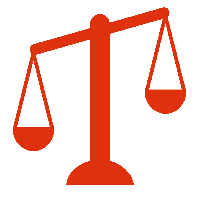By Brian Millar
Senior leaders must implement new strategies to deal with a rapidly changing world, but their workforce don’t always buy in. You can talk all you like at Davos about diversity, or at COP27 about sustainability, or at shareholder meetings about innovation, but it’s just talk if you can’t bring your colleagues on board with you.
One of the hardest parts of leadership is motivating your team and getting them excited about organizational goals. Some leaders may ask themselves, “I’ve set out my vision, but most of my colleagues don’t seem to be listening.”

I know this is a top challenge for leaders because my organization gathers data about workplace culture. We’ve worked with everyone from the U.K. government to global tech, industrial, and financial powerhouses. When it comes to workplace culture, we see consistent trends, which can usually be boiled down to three slides for our clients. We’ve merged and anonymized our data so you can enjoy them too.
Here’s what we’ve learned about what motivates workers.
What are employees actually interested in?
On average, employees tend to be more interested in their personal rewards than collective success. No shock there; but if sustainability, purpose, diversity, or culture are your only strategies for motivating workers, you may want to diversify your approach.

So, how do you move the needle? That’s where the next chart comes in.
What drives employees?
We can typically divide a company’s workforce into six attention segments, based on our massive database.
For example, Masters of the Universe want information that makes them smarter, ideally in bite-size form. Think: Captain Kirk. Meanwhile, Visionaries love abstract ideas. Think: Spock. And Campaigners want to make an impact on the world. Think: Captain Picard.

It’s important to know what drives people because it can help you communicate organizational goals to different types of workers.
For instance, Campaigners are most engaged in their company’s sustainability. Masters of the Universe are most interested in innovation And Visionaries are most motivated by discussions of strategy.
How can different groups of workers work together?
Understanding what individuals are interested in and what drives them can help you best communicate with your team.
Did your last sustainability communication feature a wind farm? I bet the Campaigners loved that. Some kids in the developing world? Something about a glistening carbon-free superfuture? Your Campaigners were with you all the way. But Campaigners make up about just 13% of the population. If you want to take the other 87% of the company with you, you’re going to have to do things differently.

For instance, Masters of the Universe may respond best to stories about the business opportunities that the sustainable economy represents. Give them concrete briefs, wind them up, and let them go.
If your culture features a lot of Disruptors who live for adrenaline rushes, you may want to get them fired up about the state of the world.
Visionaries want to know about the big thinking behind what you’re doing. Is there a technology story or something counterintuitive about your strategy? If there’s a lot of visionaries in your organization, this will make them lean forward.
Once you know how to communicate with different types of workers, you can match them with colleagues and projects that they will be motivated by.
What do these three charts tell you? Understand all of your company’s subcultures, not just the cultures that dominate the top floor.
Good leaders read the room. Great leaders reach the hearts and minds of everybody in every room.
Brian Millar is cofounder of FUBI, a consultancy which gathers data on companies’ cultures and helps leaders to become more engaging.
(17)









